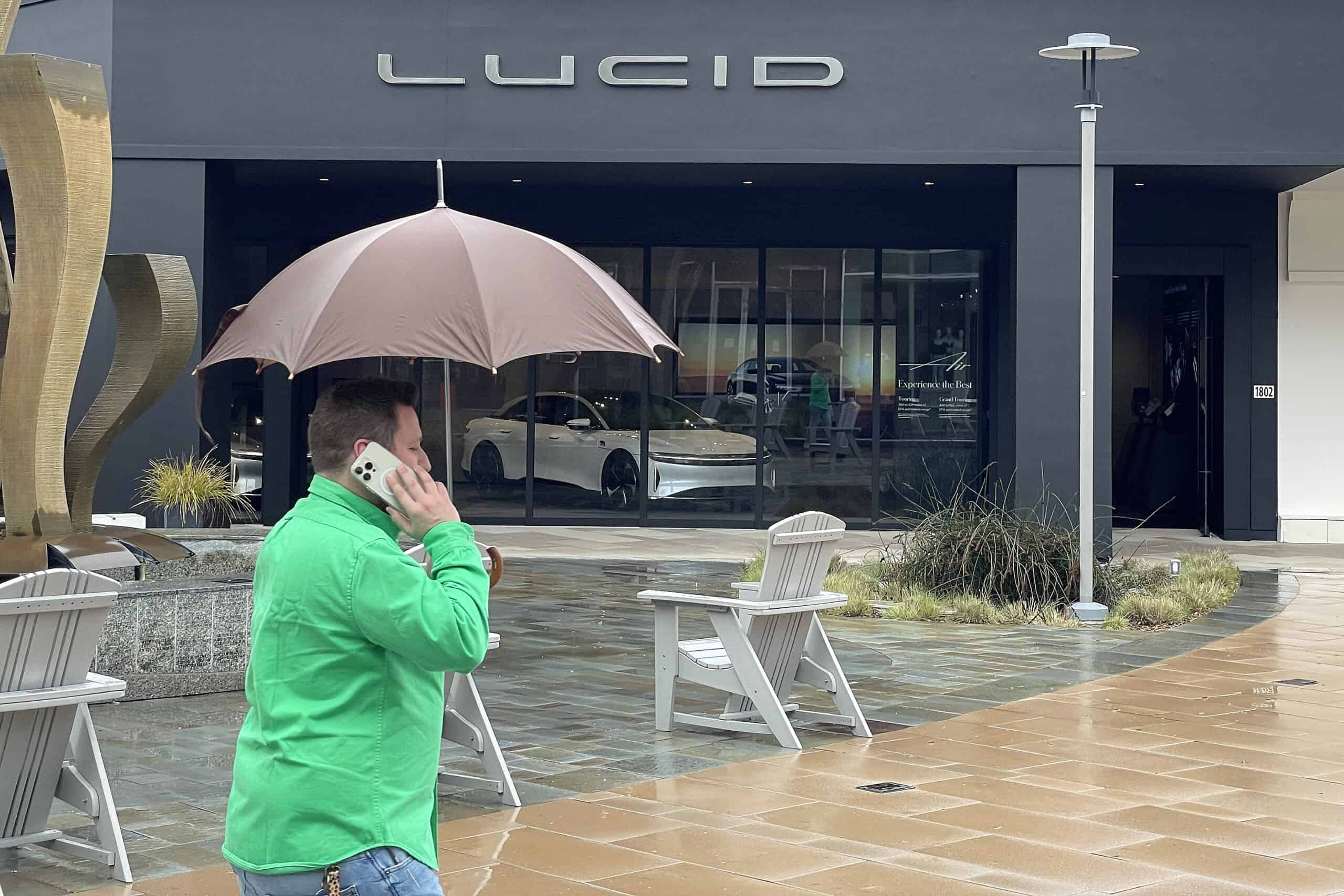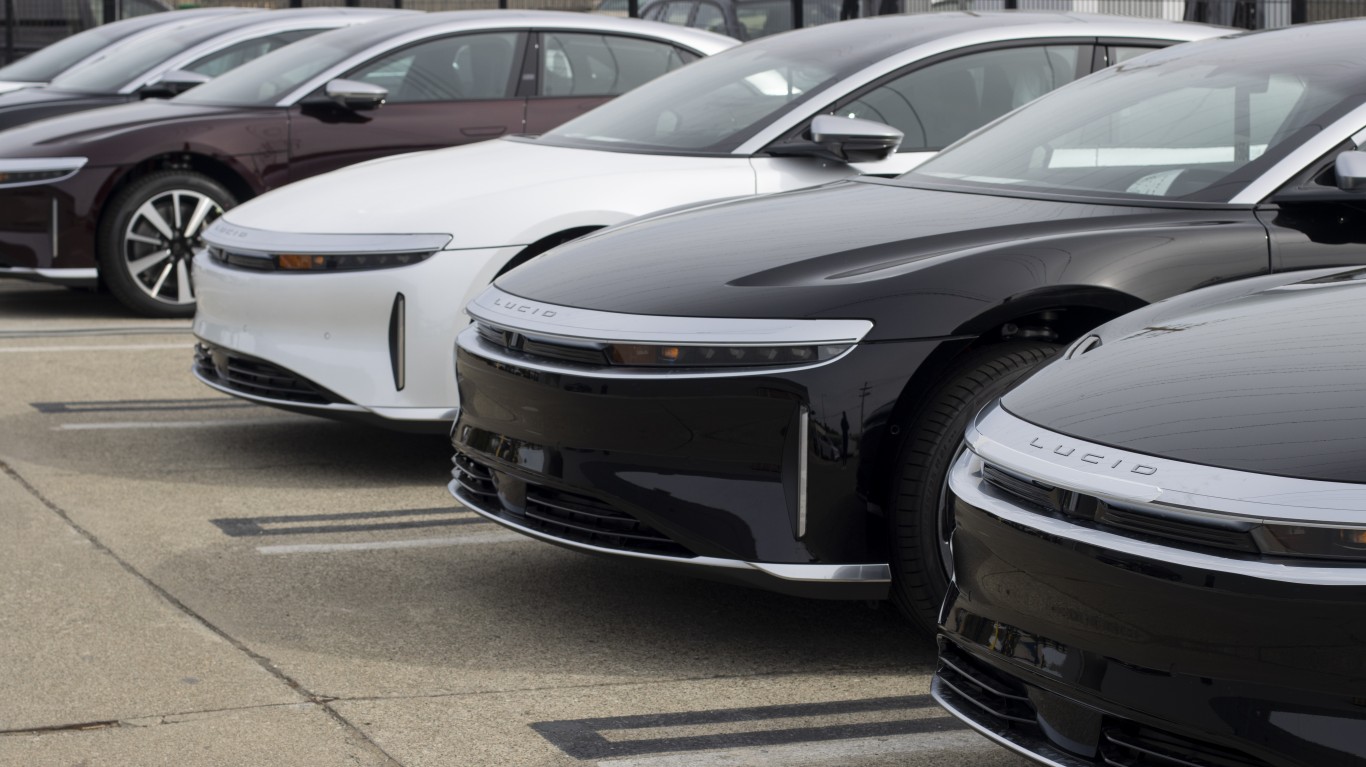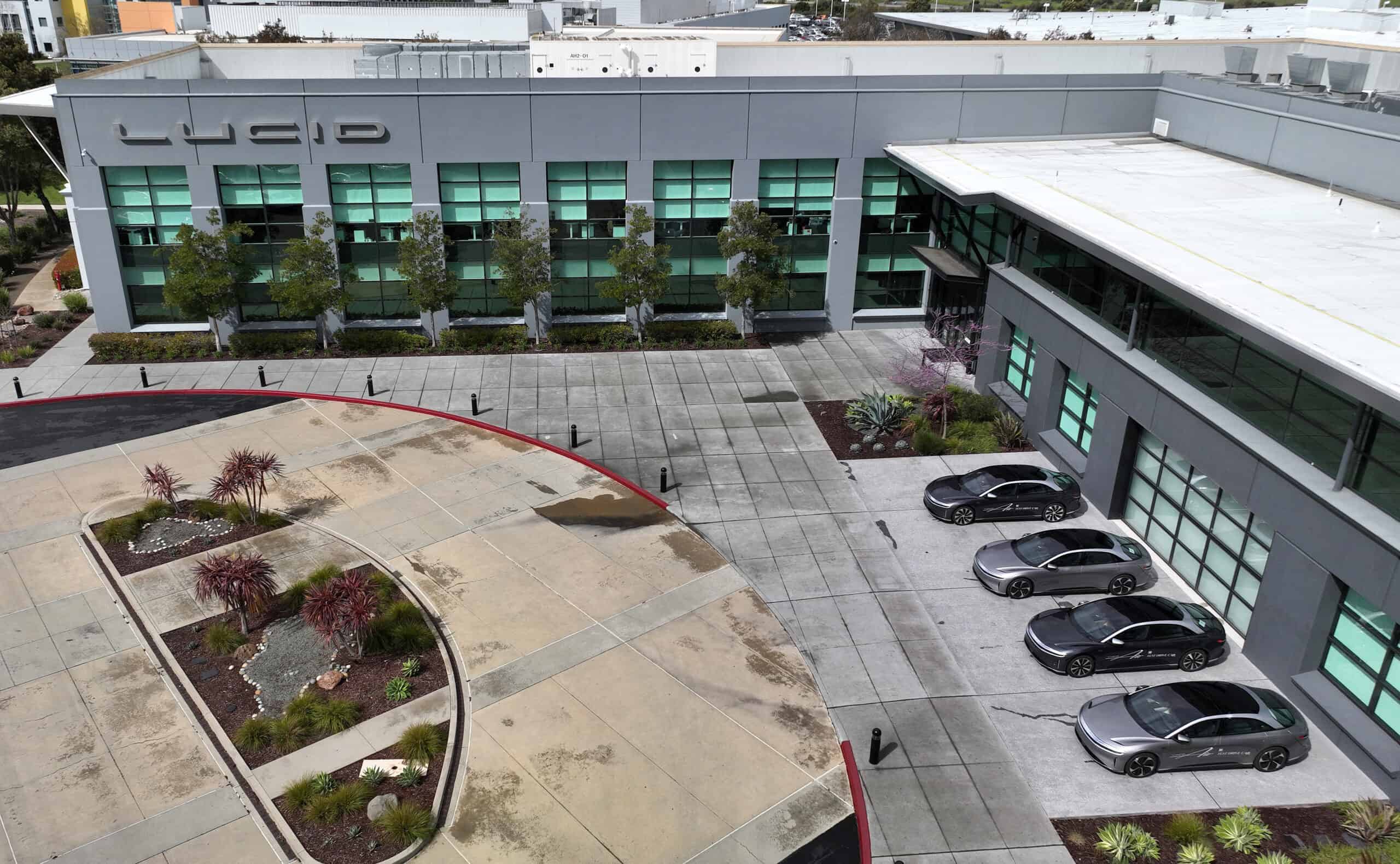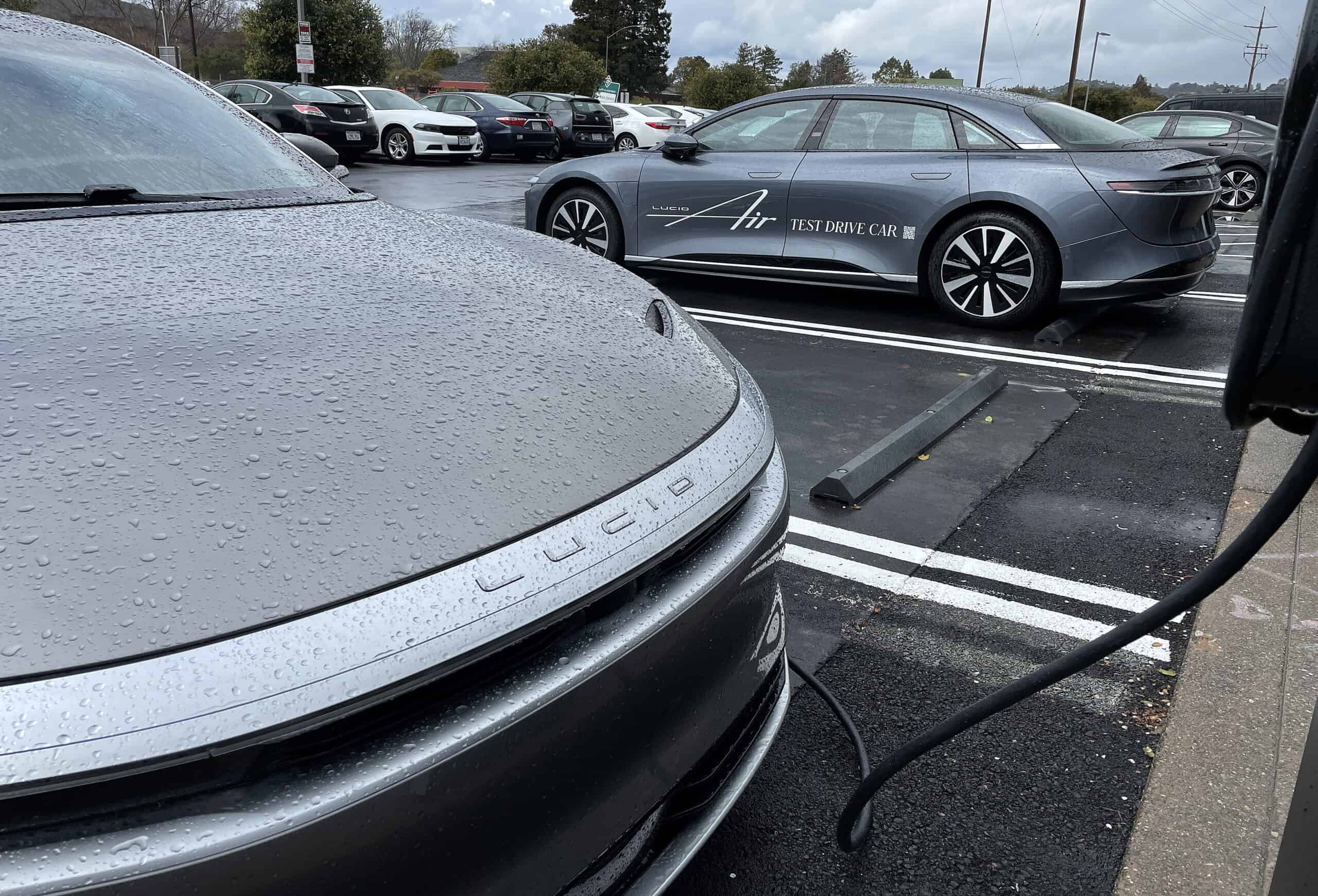Investing
Lucid (LCID) Stock Price Prediction in 2030: Bull, Base & Bear Forecasts

Published:

In February 2021, special-purpose acquisition company (SPAC) Churchill Capital announced a reverse merger with luxury EV maker Lucid Motors. Churchill had gone public at $10 a share in September 2020 and the stock price reached an all-time high of nearly $65 just a few days before the Lucid announcement. It’s been mostly downhill ever since.
When the reverse merger was completed in July 2021, Lucid Group Inc. (NASDAQ: LCID) emerged as the surviving company. The SPAC IPO raised $2.07 billion, thanks in large part to a $2.5 billion private investment in public equity (PIPE) deal. The IPO and PIPE deal raised $4.4 billion in cash at a market cap of around $24 billion. Electrek has more historical details on Lucid, including its beginnings as a manufacturer of EV batteries and powertrains.

It’s pretty clear that none of that would have happened unless Saudi Arabia’s sovereign wealth fund, known as the Public Investment Fund (PIF), had not stepped in with a $1.3 billion investment in September 2018. When the SPAC deal was completed in July 2021, PIF owned nearly 1.02 billion shares of the 1.83 billion outstanding.
PIF has invested a total of $5.4 billion in Lucid, including a June 2023 investment of $1.8 billion. PIF controls the carmaker with a current stake of around 1.4 billion shares, or about 60.5% of the 2.29 billion outstanding common shares.
At the end of the 2023 third quarter, Lucid reported $4.42 billion in cash and other liquidity. The company burned about $800 million in cash in the third quarter, a significant chunk of the $10 billion that Wall Street analysts think the company will have to spend to become cash flow positive over the next four years.
The June investment pumped up enthusiasm for the stock again. The share price rose to a recent high near $8 before dropping to around $4 a share early in November.

The company reported a third-quarter loss of $630.9 million on sales of 1,457 vehicles. That’s a staggering loss of $433,000 for each vehicle sold. Production was not much better, with just 1,550 new vehicles built.
In the first three quarters of this year, Lucid produced 6,037 vehicles and sold 4,267, year-over-year increases of 64% and 75%, respectively. Since it began selling vehicles in 2021, Lucid has sold 8,761 units and produced more than 13,200.
At the end of 2022, Lucid set volume guidance of 10,000 to 14,000 units. To reach the low end of guidance, the company would have to sell almost 4,000 units in the fourth quarter.
History is not on Lucid’s side. The company’s initial target for 2022 was set at 20,000 units before being reduced to a range of 6,000 to 7,000 units sold. Lucid actually sold 4,369 vehicles in 2022.
Here are Lucid’s most important operating numbers for the two years it has been a publicly traded company
Lucid’s per-share price to per-share sales (P/S) multiple in 2022 was 30x. For the trailing 12 months, the multiple is 14.3x. The consensus P/S multiple estimate for the next 12 months is 10.3x. The company’s current market cap is $9.91 billion.

Our predicted prices for Lucid stock in 2030 are $20 (base), $26 (bull), and $8 (bear). We’ll break down each of these scenarios in more detail below.

The Street estimate for Lucid revenue in 2023 is $635.4 million, doubling to $1.39 billion in 2024 and doubling again to $3.82 billion in 2025. A smaller number of analysts have a consensus estimate calling for sales to double again to $7.7 billion in 2026. The one estimate available for 2030 calls for sales of $21.7 billion.
Lucid’s success depends on continued support from Saudi Arabia’s PIF. The $5.4 billion that the PIF has invested in the company is less than 1% of the fund’s $700 billion in assets. Assuming that PIF won’t pull the plug and that Lucid cuts its annual losses, the company’s market cap could reach $15 billion (annual growth of around 25% for the next two years).
Profitability remains at least five years in the future. Per share losses are forecast to drop by nearly half in the next three years, from $1.39 this year to $0.76 in 2025, and to turn into profits as soon as 2026. That ought to be good enough for PIF to continue backing the carmaker through 2030 and for Lucid to command a share price of around $20.00, almost 5x its current level. The company’s stock last traded at that level in August 2022.

As with the bear-case scenario for Rivian, this one is easier to predict. For whatever reason, the PIF may be called on to bail the company out again. If the Saudis choose not to, that will be the end of Lucid. That has to be the worst-case scenario.
The company could muddle along, however, as long as the PIF remains involved. Competition and cost control are the enemy. The company has to chop, not chip, away at the massive loss it takes on each car it sells. And this has to happen sooner rather than later.
Second, as more automakers, particularly from China and India, enter the market, Lucid’s niche at the high end may be too small to keep the company afloat. The company announced a new full-size premium SUV, the Lucid Gravity, in November. The projected base price of the Gravity is under $80,000, only slightly more than its $77,400 entry-level price for the Lucid Air. Lucid continues to focus on the higher end of the market, a strategy that has been only a modest success so far.
If Lucid makes it to 2030, a bear-case scenario based on the company’s inability to find a broader market or control costs while still keeping the PIF on-side might see the share price double to around $8.00 per share. That’s our bear case price.

The current high 12-month price target on the stock is $7.00 per share. Ten of twelve analysts rate the stock a Hold, with one each rating the shares a Buy or a Sell.
Lucid recently began operations at its Saudi Arabian manufacturing facility. Initial production targets 5,000 units, growing to 150,000 “after the middle of the decade.” That’s a little squishy.
Tesla delivered its first vehicle from the Shanghai Gigafactory in December 2019. Production reached 150,000 vehicles annually by the end of 2020. Lucid expects a production ramp of at least three years to reach 150,000. Tesla produced 1 million cars at its Shanghai facility in 33 months. Thirteen months later, in September 2023, the company reported a delivery total of 2 million units from Shanghai.
If Lucid can’t pick up the pace and get into the EV market faster and with a competitive vehicle, then the best and most likely outcome for Lucid’s investors is that the PIF decides to acquire 100% of the stock, taking the company private. Adding a premium of 30% to our base case price implies that individual investors would receive $26.00 a share in a take-private transaction.
We could conjure other bullish scenarios that would boost the share price even higher. In our view, however, all have a smaller chance of happening than either a buyout or a failure.
The thought of burdening your family with a financial disaster is most Americans’ nightmare. However, recent studies show that over 100 million Americans still don’t have proper life insurance in the event they pass away.
Life insurance can bring peace of mind – ensuring your loved ones are safeguarded against unforeseen expenses and debts. With premiums often lower than expected and a variety of plans tailored to different life stages and health conditions, securing a policy is more accessible than ever.
A quick, no-obligation quote can provide valuable insight into what’s available and what might best suit your family’s needs. Life insurance is a simple step you can take today to help secure peace of mind for your loved ones tomorrow.
Click here to learn how to get a quote in just a few minutes.
Thank you for reading! Have some feedback for us?
Contact the 24/7 Wall St. editorial team.